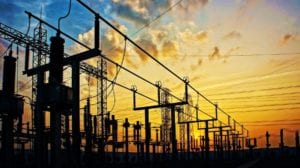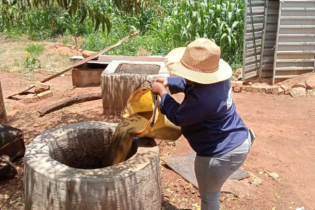South Africa’s recent energy crisis escalation into Level 5 and 6 load shedding has highlighted the stark need for businesses, industries and municipalities to generate their own power.
By Wayne Alcock, Managing Director at Quyn International Outsourcing Mines were first to establish their own solar plants to secure power supply. Today, municipalities have followed suit with the unveiling plans for initiatives to secure their own supply and to eliminate dependence on the incumbent power producer by creating decentralised power generation. Recent reports noted that eThekwini, South Africa’s third biggest city will issue a request for proposals to construct 400 megawatts of power generation capacity later this year or early in 2023. The experts in alternative energy will need to be called in to handle the planning, development, construction and maintenance of these supply plants. This is good news for South Africans as it will mean a significant increase in the need for labour and skills specific to the energy sector, as other industries and municipalities follow suit, working to become more energy self-sufficient. Desperate times Eskom is currently responsible for meeting 95% of South Africa’s demand for electricity. In September 2022, Eskom started implementing Stage 6 power cuts which meant businesses and homes were forced to go without electricity for more than 10 hours a day. The company has since reduced the severity of load shedding, vacillating between Stages 2 and 3, depending on the time of day. However, it’s not a simple case of being without power. Rolling blackouts also affect the delivery of other services, including water supply in some areas, resulting in ‘water shedding’. With South Africa’s economy already struggling to recover from the COVID-19 pandemic, South Africa is running out of time to act. Already in 2022, one of Eskom’s coal plants has passed its end-of-life status which means 1,000MW will soon be offline. By 2035, a further nine plants will have reached their end-of-life, which means 19,000MW will go offline and put 55,000 jobs at risk. By 2050, 12 plants will be offline, cutting 33,000MW off the grid. Desperate measures Speaking at the 2023 Africa Renewable Energy Investment Summit in late September, chief executive officer Andre de Ruyter outlined Eskom’s proposed solution to South Africa’s energy crisis. The power utility plans to lean heavily into renewable energy and other planned projects. By the end of 2024, de Ruyter said that most of the 33,000MW shortfall will be covered by new projects, including:- 3,500MW from the Seriti renewables projects
- 1,440MW from Kusile entering full operation
- 2,000MW from Independent Power Producers (IPPs) on leased land
- 3,500MW from new pumped storage
- 1,500MW from municipal procurement
- 2,600MW from Renewable Independent Power Producer Programme (REIPPP) 5 projects
- 5,200MW from REIPPP 6 projects
- 7,000+MW from other projects
Earlier in July 2022, President Ramaphosa announced a number of proposed changes and solutions signalling that the government has begun to break the monopoly of its state-owned utility. The regulatory changes are intended to encourage development and growth of power plants by allowing power plants of any size to be constructed without prior licensing.
Previously, projects generating more than 100MW required licensing, while those generating 100MW or less were only allowed to connect to the grid from 2021. Going forward, Eskom will be allowed to purchase capacity from private suppliers in order to meet shortfalls. Also included in his reforms was an increase to Eskom’s maintenance budget, and an increase in recruitment of skilled workers to meet the country’s growing renewable energy sector. Collective problem-solving In the wake of a Solidarity Research Institute (SRI) report revealing that South Africa’s private sector will have to generate almost as much power by 2035 as Eskom is producing today, there has been an urgent call for developers, shopping malls, large-scale enterprises, homeowners’ associations, entrepreneurs, farmers and others to submit applications for the generation, distribution and sale of power. All of which is a good indication that there is about to be a huge boom in the renewables sector, which will need to be met with the right skills and supplied with an enormous labour force. Where will these skills and this labour come from? They won’t be easy for independent power producers to source unassisted. Furthermore, the scale of labour required is not something that such entities will be able to handle on their own. Everyone doing their part Not only will there be a need for skills and labour to plan, develop and construct the renewable energy production projects, there will also be a need to run, manage and maintain these plants once commissioned. It will be necessary for organisations seeking to build their own power generation capacity to partner with a Temporary Employment Services (TES) provider in order to meet the human resource requirement of their initiatives. TES providers have an important role to play in addressing South Africa’s energy crisis, as those that are experienced in the construction and renewable energy industry will already have an extensive existing database of the necessary skills and labour. This will significantly shorten the time required to source, relocate and on-board sufficient resources for the required duration. Along with recruitment capabilities and a nationwide footprint, the right TES partner will also manage the human resource aspect of any renewable power project. This means that the organisation running the project (whether developer, mining enterprise, farmer or municipality) can completely outsource this component that includes every aspect of managing a labour force – such as payroll, compliance, training, industrial relations – handing these off with confidence to a capable partner. Although the future does seem bleak right now, it is important for us to remember that there is always hope. As South Africans, we have always shown a unique ability to problem solve. If every willing industry player, business owner, and household pulls together and contributes to the solution in whichever way they are capable, we can pull South Africa out of the dark times that lie ahead.







